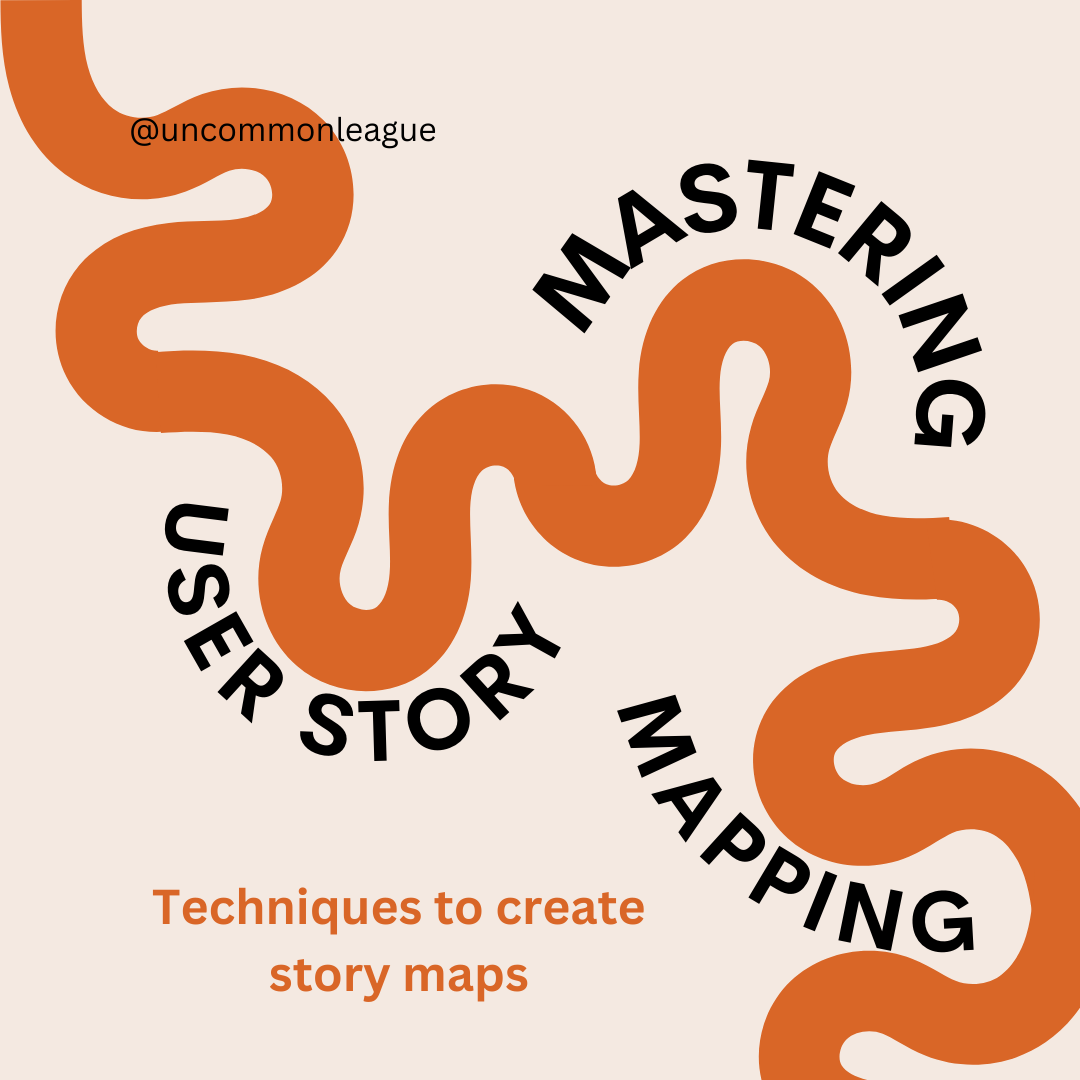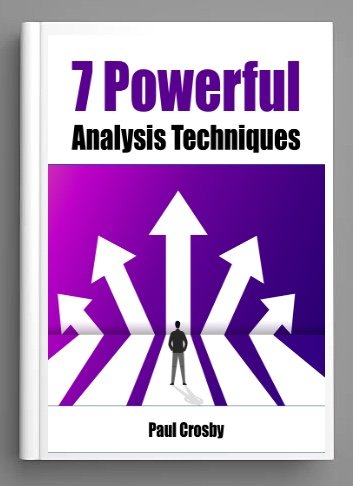Mastering User Story Mapping in Agile Projects: A Business Analyst's Strategy
In the Agile project ecosystem, the construction of a User Story Map (USM) is a pivotal step that sets the stage for a successful and user-centered development journey. Business Analysts (BAs) are often at the forefront of this process, wielding a variety of business analysis techniques to ensure that the USM not only captures the essence of the user's needs but also aligns with the project's goals. The choice of the right technique for building a USM is critical, as it influences the project's trajectory, facilitates stakeholder engagement, and ensures alignment between the development team's efforts and user expectations. This article explores how a BA can select the best technique for constructing a USM in an Agile project and how advancing Agile business analysis skills can lead to improved project outcomes, whether in Agile or Waterfall methodologies.
Selecting the Right Technique for User Story Mapping
The construction of a USM requires a deep understanding of the user's journey, the ability to identify key functionalities, and the foresight to prioritize them effectively. Here are some key considerations BAs should take into account when selecting a technique for USM:
1. Stakeholder Involvement: Techniques that encourage active stakeholder participation are invaluable. Engaging stakeholders in the mapping process ensures that the user stories reflect real user needs and garner buy-in from all project participants.
2. Visualization: Techniques that offer clear visualization of the user's journey, such as storyboarding or journey mapping, can be particularly effective. They provide a visual narrative of the user's interaction with the product, highlighting pain points, opportunities, and key functionalities.
3. Prioritization Frameworks: Given the iterative nature of Agile development, techniques that incorporate effective prioritization frameworks, like MoSCoW (Must have, Should have, Could have, Won't have this time) or Kano Model analysis, can be instrumental in guiding the development focus.
4. Iterative Refinement: Techniques that are adaptable and allow for iterative refinement of the user story map are crucial in Agile environments. This flexibility ensures that the USM remains relevant and aligned with evolving project insights and stakeholder feedback.
Advancing Agile Business Analysis for Enhanced Project Outcomes
To elevate their contribution to Agile (and even Waterfall) projects, BAs should focus on the following strategies:
1. Enhance Collaborative Skills: BAs should hone their facilitation and collaboration skills to effectively engage cross-functional teams and stakeholders in the USM process. This includes mastering techniques for virtual collaboration, given the prevalence of remote and distributed teams.
2. Leverage Systems Thinking: Applying systems thinking in the construction of a USM helps BAs understand and depict the complex interactions within the system being developed. This holistic view is essential for identifying dependencies and potential impacts of user stories on the overall system.
3. Adopt Agile Modeling Techniques: Agile modeling techniques, such as Impact Mapping or Feature Trees, can complement traditional USM approaches by providing additional layers of analysis and prioritization, ensuring that user stories contribute to strategic goals.
4. Continuous Learning: The Agile field is dynamic, with new methodologies, tools, and techniques emerging regularly. BAs should commit to continuous learning to stay abreast of best practices and innovative approaches to USM and Agile development.
5. Cross-Methodology Application: While specializing in Agile, BAs should also understand how their USM techniques can be adapted for Waterfall projects, where upfront planning and detailed documentation are more prevalent. This versatility enhances a BA's ability to contribute effectively, regardless of the project methodology.
The Right Technique
For Business Analysts navigating the Agile project landscape, selecting the right technique for building a User Story Map is more than a methodological choice—it's a strategic decision that influences the project's direction, engagement, and success. By prioritizing stakeholder involvement, visualization, prioritization, and iterative refinement in their technique selection, BAs can construct a USM that truly serves as the backbone of the development process. Furthermore, by advancing their Agile business analysis skills, embracing continuous learning, and applying systems thinking, BAs can elevate their impact, driving projects to successful outcomes in both Agile and Waterfall settings. The journey of a BA is one of perpetual growth and adaptation, with each project offering a new opportunity to refine their craft and contribute to the creation of user-centered, value-driven solutions.
Consider these techniques:
Storyboarding - visual description of the customers journey or stakeholders process
Empathy Mapping - understanding your customers in a more meaningful way
Customer Journey Mapping - the ups and downs of the customers journey from start to finish
Salience Model - understanding internal stakeholders to manage their expectations
Agile Vision Board - establish a common vision between the Agile team and stateholders
Product Roadmap - outline the oder in which capabilities and functions will be delivered to set expectations about priority
MOST Technique - aligning the abilities with the organization’s mission statement and objectives from senior leaders
Functional Decomposition Diagram - understand the technical components of the overall solution and their relationships
Personas - develop a deeper understanding of customer market segements and behaviors
Concept Diagram - a high-level outline of the proposed solution to meet the expectations outlines in the vision board. Emergent architecture will cause this diagram to change overtime.
Walking Skeleton - Identify a minimal, viable path through the user activities that delivers basic value to the user, often referred to as a "walking skeleton."
Creating a User Story Map
Here are the key techniques and tasks involved in creating a User Story Map:
1. Gather the Right People
Involve Key Stakeholders: Include product owners, developers, UX/UI designers, testers, and business analysts.
User Representation: Ensure the presence or input of end-user representation or someone with deep user empathy and understanding.
2. Understand User Goals and Activities
Identify Personas: Create or refer to user personas that represent your typical users. You could also utilize customer market segments.
Define User Goals: Understand what users want to achieve with the product as well as their aspirations for the product.
List User Activities: Break down the goals into high-level activities or tasks that users perform to achieve their goals.
3. Break Down Activities into Cards
Detail User Tasks: Further break down activities into smaller, actionable tasks that users undertake. Place them on cards.
Sequential Ordering: Arrange these tasks in the order they are likely to be performed by the users.
4. Mapping
Horizontal Axis for User Activities: Arrange the high-level activities on a horizontal axis in the sequence a user might perform them. This might be based on a customers perspective or the Product Roadmap created by the Product Manager.
Vertical Axis for Task Details: Use the vertical space below each high-level activity to map out the tasks on cards in more detail, creating a “backbone” for your story map.
5. Format Cards into User Stories
From Cards to Stories: Convert cards into user stories that follow the “As a [user], I want [need] so that [benefit]” format.
Capture Variations and Alternatives: Identify different paths or options within activities and tasks.
6. Prioritization
Walking Skeleton: Identify a minimal, viable path through the user activities that delivers basic value to the user, often referred to as a "walking skeleton."
Prioritize User Stories: Use techniques like MoSCoW (Must have, Should have, Could have, Won’t have this time) to prioritize stories.
7. Iteration and Release Planning
Identify Releases: Use the map to plan what set of user stories will be developed and delivered in each release. Try to align the user stories with the Product Roadmap. You may need to consider changing the story map prioritization or changing the Product Manager’s Product Roadmap.
Plan Iterations: Break down releases into iterations or sprints, focusing on delivering a coherent set of user stories that provide value.
8. Continuous Refinement
Review and Adapt: Regularly revisit the user story map with the team and stakeholders to refine and update it as you learn more about user needs and project constraints. The User Story Map is in constant motion and should not be stagnant.
Incorporate Feedback: Adjust the map based on feedback from usability testing, user interviews, and other sources.
Utilizing the information gained in completing these techniques allows the Business Analyst or Product Owner to more completely create a User Story Map (USM). Story maps are best created after understanding the overall market segment, customers, internal stakeholders, organizational mission, project outcomes vision, and functional decomposition of potential business solutions.
Unlock your full potential as a Business Analyst with our game-changing online course! Tailored for the analytical minds eager to lead, innovate, and transform, this course is your gateway to mastering the most effective business analysis techniques. Whether you're looking to excel in Agile, shine in Waterfall, or innovate in uncharted territories, our expert-led curriculum is designed to elevate your skills, boost your career, and make you the go-to strategist in any room. Join us, and become the catalyst for change your organization didn't know it needed!
Ready to up your business analyst game? Let’s explore 7 powerful techniques that are shifting the business analysis landscape with expert insight from business analysis pros.
7 Powerful Analysis Techniques Book
Amazon Kindle $9.99
Uncommon Book of Analysis Techniques Book
PDF Download $75.00



